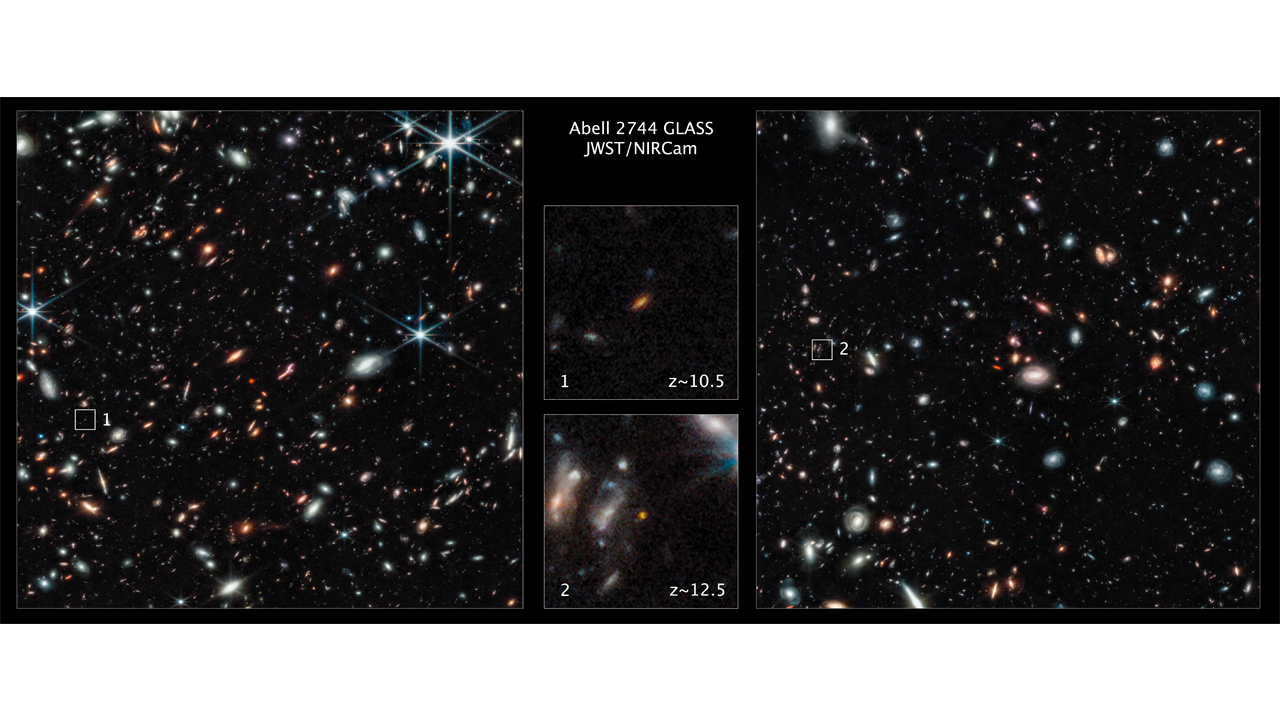Nasa’s Webb telescope finds vast ‘undiscovered country’ of galaxies totally unlike our own
Nasa’s Webb telescope has found a vast “undiscovered country” of galaxies from the early universe.
The galaxies existed around 400 million years after the Big Bang – and are incredibly bright, puzzling astronomers. They are so bright that they seem to challenge our understanding of how galaxies form, scientists say.
“These observations just make your head explode,” said Paola Santini, one of the authors of a paper describing the new findings, in a statement. “This is a whole new chapter in astronomy.

“It’s like an archaeological dig, and suddenly you find a lost city or something you didn’t know about. It’s just staggering.”
Webb has allowed scientists to see starlight that is more distant than any previously seen – meaning also that it is older than any star we have previously spotted. The older of the two newly discovered galaxies – GLASS-z12, which came about just 350 million years after the Big Bang – is 50 million years older than the previous record holder.
The two galaxies age means they are remarkably different from our own galaxies and those much more mature ones that surround us today.
They are a vastly different shape, for instance. They are squished into spheres or discs that are much smaller than our own galaxy.
They are also turning gas into stars very quickly. They may have started giving birth to stars just 100 million years after the universe came into existence – almost 14 billion years ago.
That suggests that the universe began lighting up more quickly than people would have guessed.
“We’ve nailed something that is incredibly fascinating. These galaxies would have had to have started coming together maybe just 100 million years after the big bang. Nobody expected that the dark ages would have ended so early,” said Garth Illingworth of the University of California at Santa Cruz, a member of the research team, in a statement.
“The primal universe would have been just one hundredth its current age. It’s a sliver of time in the 13.8 billion-year-old evolving cosmos.”
The reason for their brightness is still unclear. They may be massive, with lots of lower-mass stars, or smaller but with a lot fewer very bright stars.
Scientists hope to solve those questions and more with more detailed observations from the Webb telescope. The new discoveries come from data that was gathered only days after it started its observations.
The galaxies – largely hidden until now – are just the latest discovery from Nasa’s James Webb Space Telescope, which is peering deep into the cosmos.
“Everything we see is new. Webb is showing us that there’s a very rich universe beyond what we imagined,” said Tommaso Treu of the University of California at Los Angeles, principal investigator on one of the Webb programs.
“Once again the universe has surprised us. These early galaxies are very unusual in many ways.”
Two research papers describing the findings have been published in the Astrophysical Journal Letters.
Join our commenting forum
Join thought-provoking conversations, follow other Independent readers and see their replies
Comments
Bookmark popover
Removed from bookmarks